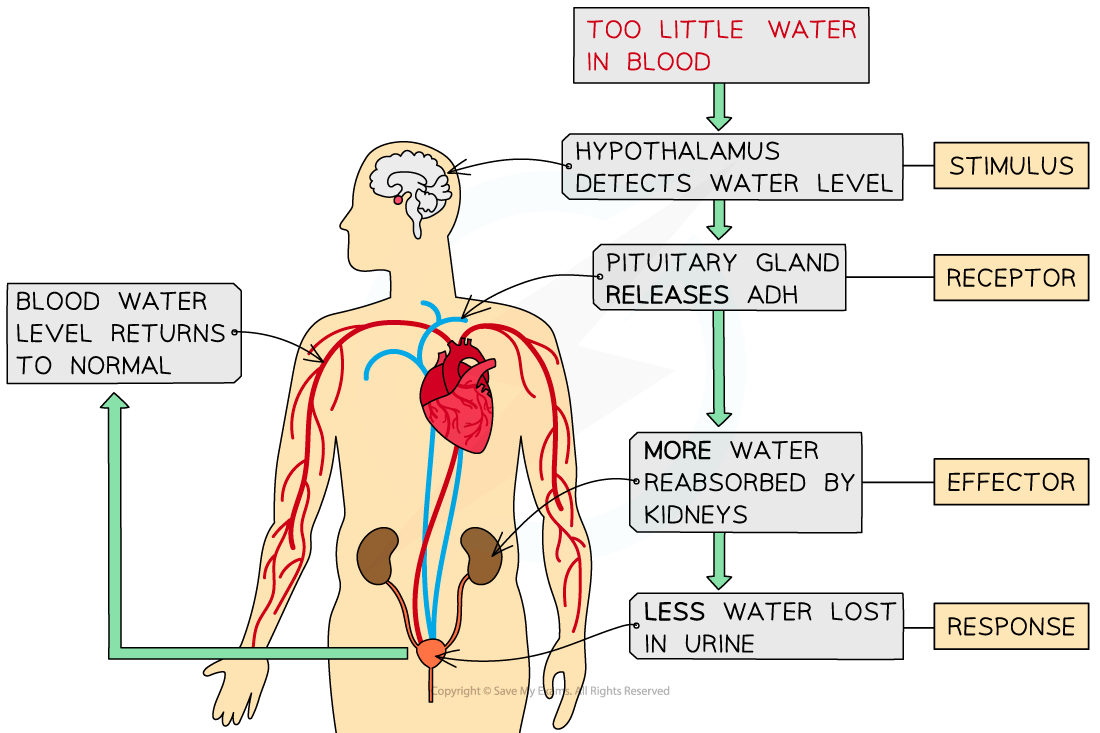- 翰林提供学术活动、国际课程、科研项目一站式留学背景提升服务!
- 400 888 0080
Edexcel IGCSE Biology 复习笔记 2.10.2 Control of Homeostasis
Edexcel IGCSE Biology 复习笔记 2.10.2 Control of Homeostasis
Co-ordinating a Response
- Homeostasis (maintaining controlled conditions within the body) is under involuntary (automatic) control
- This means that the brain stem (or non-conscious part of the brain) and the spinal cord are involved in maintaining homeostasis – you don’t consciously maintain your body temperature or blood glucose level
- These automatic control systems may involve nervous responses or chemical responses (e.g. via hormones)
- All control systems that carry out co-ordinated responses require the following:
- A stimulus (a change in the environment e.g. a change in glucose levels in the blood, a change in body temperature etc.)
- A receptor (receptor cells that detect stimuli)
- A coordination centre (such as the brain, spinal cord and pancreas), which receives and processes information from receptors
- An effector (a muscle or gland), which brings about responses to restore optimum levels

A co-ordinated response (such as that required when there is not enough water in the blood) requires a stimulus, a receptor and an effector
转载自savemyexam

最新发布
© 2025. All Rights Reserved. 沪ICP备2023009024号-1









